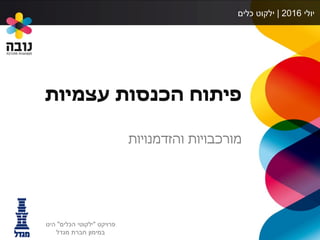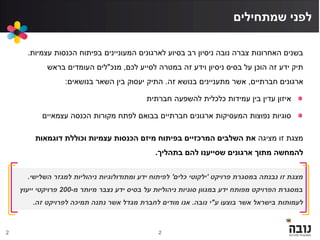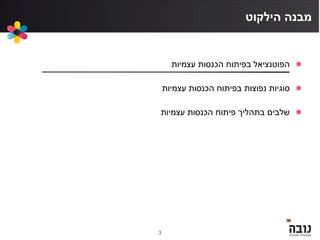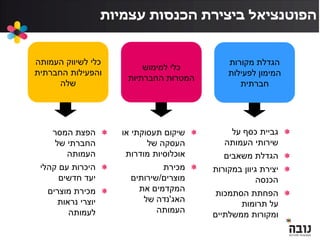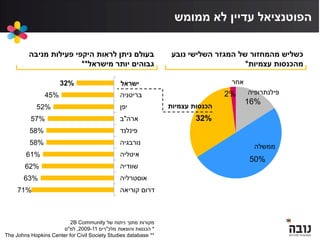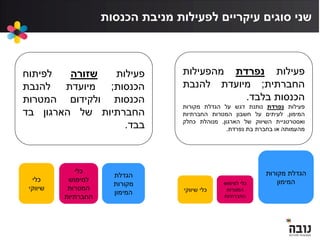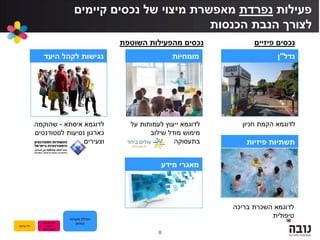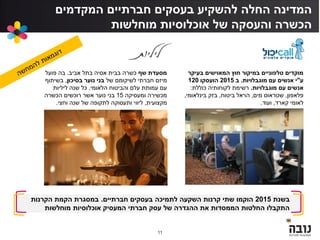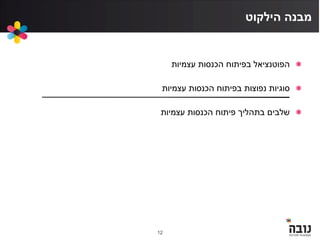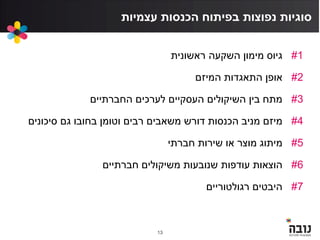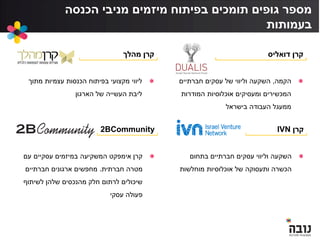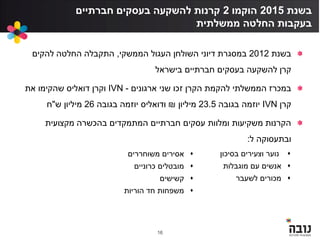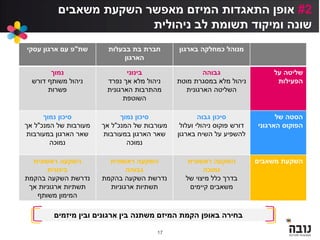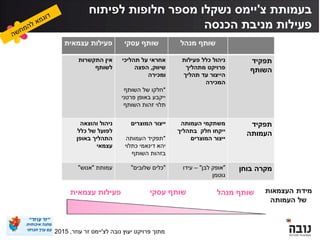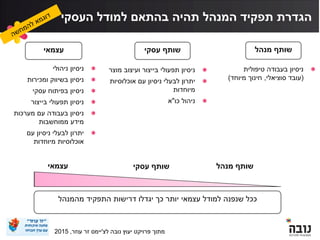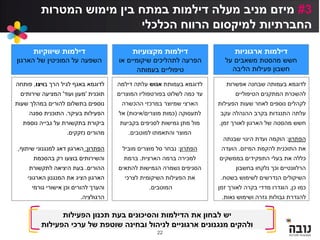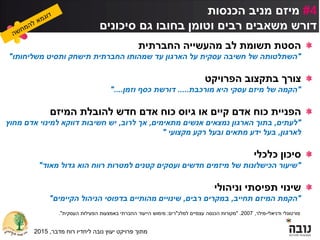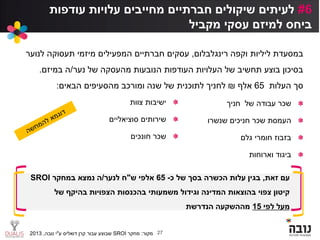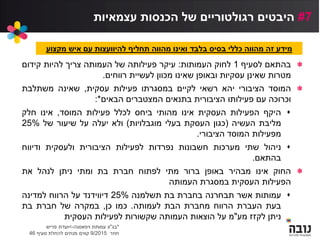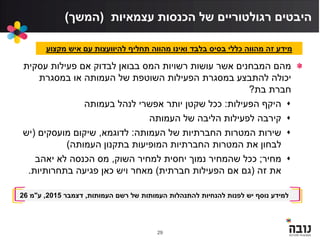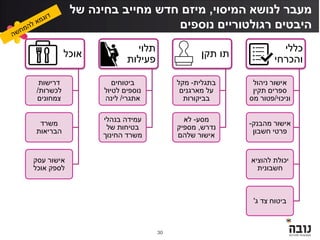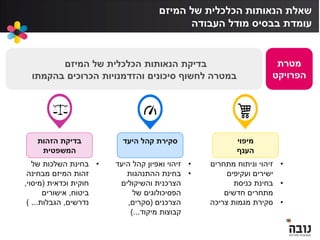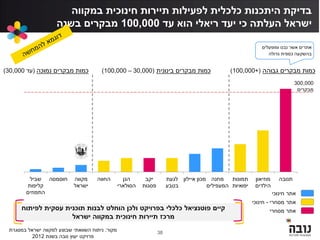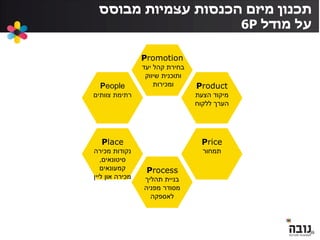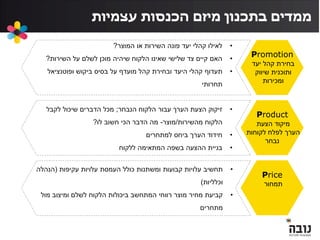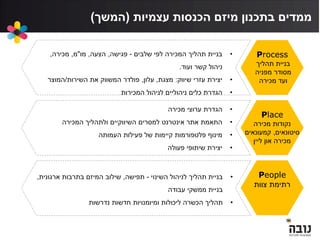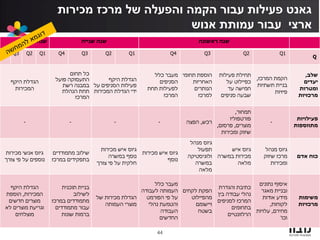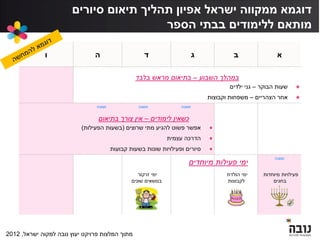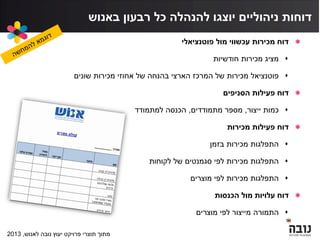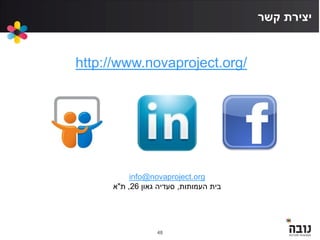????? ???? ????? ?????? ???????
- 1. ??????????????????????? ???????? ???????? ??????? ??????2016|?????? ??????? ????????"??????? ????????"?????? ?????? ?????? ????????
- 2. 2 ???????????????? ???????? ???????? ???????? ???????????? ?????????? ??????? ???? ???????? ?????? ?????? ?????????? ???????. ????? ??????? ??????? ???? ?????? ???????? ?????? ???? ?????? ???? ????? ?????,?????"?????? ????????? ????? ????????? ?????????,???? ??????? ??????????? ?????.????????? ?????? ????? ??????? ??????: ???????? ???????? ???????? ???????? ????? ?????? ??????? ????????? ??????? ???????? ?????? ??????? ????????? ????????? ?????????? ???????? ???????? ??????? ???? ??????????????? ???????? ???????? ???????? ?????? ???????? ?????????? ???????? ???? ???????? ????? ????????? ????????? ?????? ????????. 2 ???????? ???????? ??????? ???? ??????'?????? ????????'???????? ??????? ?????????? ?????????????? ????? ????????. ??? ??????? ?????? ????? ?????? ???? ?????????? ???????? ???????? ????? ??????? ????????? ????????-200??????? ????????? ??? ??????? ????? ???????? ?????????"?????? ???.???? ????????? ??????? ?????? ????? ?????? ??????? ??????? ?????.
- 3. 3 ???????? ?????? ???????? ???????? ???????? ??????????? ???????? ???????? ???????? ???????? ???????? ???????? ???????? ??????? ???????? ???????
- 4. ????????? ????????;??????? ????? ???????? ?????? ???????"???????? ??????? ??? ???????? ???? ????????,???????? ??????? ????? ??????? ??????? ???????? ????????? ??????? ??????? ????? ?????? ??????? ?????? ???????"??????? ??????? ??? ?????? ????????,???????? ???? ??????? ???????? ???????,???????? ????,???? ?????? ????????'. ??????? ??????? ????? ???????? ??????? ?????"????????????????????????????????????????????;????????????????????????????????,???????????????????? ???????????????????,??????????????????????????????????????????????????.?????????????????????????????????? ????????.????????,?????????????????????????????????????????????????,?????????????????????????????????????.
- 5. ???????? ???????? ???????? ??????????? ???? ????? ??????? ???????? ???????? ???????? ??????? ????????? ??????? ??????? ??????? ????????? ??????? ???????? ???? ?????????? ????????? ??????????????? ????????? ???????? ???????? ???????? ????? ?????????? ???????? ???????? ???????? ????? ????????? ?????????? ????? ???? ????????? ??????? ???? ??????? ???????? ??????????? ??????? ????????/????????? ???? ????????? ?????'???? ????? ???????? ?????? ?????? ???? ???????? ???????? ?????? ???? ???????? ??????? ????? ???????? ??????? ??????? ??????? ????????
- 6. ??????? ???????? ??????? ??????? ?????? ??????? ???????? ?????? ????????** ?????? ???????? ??????? ???? ????????? ??????? ???????? ?????????* ??????? ???? ??????? ??????????? 16% 50% 32% 2% ??????? ???????????? ????? ???????? ???????? 71% 63% 62% 61% 58% 58% 57% 52% 45% 32% ???????? ?????? ?????????? ???????? ???????? ????????? ???????? ?????"??? ????? ????????? ??????? ???? ??????? ?????? ????????2B Community *????? ????????? ????????"?????2009-11,????"??? **The Johns Hopkins Center for Civil Society Studies database ???????
- 7. ???????? ??????? ????????? ????????? ??????? ????? ??????????????? ???????????????? ????? ???????? ?????????? ???????? ????? ??????? ???????? ???????? ????? ???????? ???????? ?????????? ????? ???????? ????????????????????????? ?????????;??????????????? ??????????????. ?????????????????????????????????????????????? ????????,????????????????????????????????????? ????????????????????????????????.?????????????? ???????????????????????????????. ??????????????????????? ????????;??????????????? ????????????????????????? ?????????????????????????? ?????.
- 8. 8 ??????????????????????? ??????? ???? ??????? ???????? ???????? ?????? ??????? ???????? ??????????????? ?????????? ??????? ?????"??? ???????? ???????? ??????? ?????? ???????? ??????? ??????? ???????? ????????? ????????? ???? ????????? ??????? ???????? ??????? ?????? ??????? ????????? ?????? ?????? ???????? ???????????????-???????? ??????????? ???????? ???????? ????????? ?????? ??????? ??????????????? ???????????????? ????? ???????? ?????????? ???????? ?????
- 9. 9 ??????????????????????? ???????? ?????????? ??????? ???????? ???????? ???????? ??????????? ???? ??????? ???????? ????????? ???????? ??????? ??????? ????????? ??????? ?????????? ???????? ??????? ???????? ???????? ???????? ??????? ???????? ???????? ???????? ????? ???????? ?????????? ???????? ?????
- 10. 10 ??????? ???????? ??????? ?????? ???????? ?????"??????? ?????????" ???????? ?????? ????????,??????? ?????? ??????? ?????: * ??????? ???? ???????? ???????? ??????? ???? ???????? ??????? ???????? ??????,????????? ??????? ???????? ???????? ??????????.???????????????? ???? ??????? ??????? ??? ????????"????????? ?????????? ???,??????? ?????? ????? ?????,???? ?????? ?????%51?????????? ???????? ?????????. ???????? ?????? ????? ???? ????????? ??????? ?????????? ??????? ??????? ????????????????????? ????? ?????????????????? ?????????? ????????? ?????? ???????????????? ??????,?????? ??????? ???? ????????????? ??????? ?????? ??????? ??????? ??????? ?????-????????? ??????????????????. *??????:????????? ??????? ??????? ??????? ????? ?????? ??????? ???????? ???????,2012
- 11. 11 ????????? ????????? ???????? ???????? ?????? ???????? ????????? ??????????? ???? ???????? ??????? ???? ????????????? ????? ?????? ?????? ??????.?????? ???? ???? ????????? ??????? ?????????????? ?????? ?????,???????? ???????? ????????? ????? ??????? ????.???????? ????? ???? ????????? ????????15??????? ???????? ????? ?????? ????? ?????????,?????? ????? ???? ???????? ????????? ???????. ??????? ?????????? ????? ???????? ?????????? ???????? ???"??????????? ???? ??????? ???.???2015????????120 ??????????? ???? ???????.??????? ?????????? ???????: ????????,????? ????????,??????? ??????,?????????? ?????, ?????? ???????,??????. ??????2015????????? ???????? ???????? ??????? ??????? ????? ???????.???????? ?????? ???????? ????????? ??????????? ???????? ??????? ????? ???? ???????? ???? ????????? ???????? ????????
- 12. 12 ???????? ?????? ???????? ???????? ???????? ??????????? ???????? ???????? ???????? ???????? ???????? ???????? ???????? ??????? ???????? ???????
- 13. 13 ???????? ???????? ???????? ???????? ???????? 1#????????? ??????? ??????? ?????? 2#??????? ????????? ?????? 3#?????????? ???????? ????????? ?????????? ????? ????? 4#????????? ???? ??????? ??????? ?????? ???????? ?????? ???????? ?????? ?????? 5#??????? ??????? ???? ?????? ??????? 6#????????? ?????????? ????????? ???????? ???????? 7#???????????? ????????
- 14. 14 1#??????? ????????? ??????? ???????? ?????? ?????? ?????? ??????? ???????? ???? ???????? ??????? ????????????????????? ???? ??????? ????? ?????????? ???????? ???????? ???????? ????????? ??????? ???? ?????? ?????? ??????? ??????? ??????? ?????? ?????????? ??????? ????????? ????????? ???????? ??????? ??????? ???????? ??????
- 15. ?????? ????? ?????? ???????? ???????? ???????? ???????? ??????? ???????? ???? ???????? ?????? ????????????? ??????,????????? ??????? ???? ???????? ??????? ????????? ??????????? ?????????? ?????????? ???????? ???????? ??????? ??????? ??????? ???????? ???????? ???????? ??????? ?????? ????????? 2BCommunity ???? ???????? ????????? ????????? ???????? ????? ???????? ??????.????????? ????????? ???????? ???????? ?????? ????????? ????? ??????? ????????? ?????? ??????? ?????IVN ??????? ????????? ??????? ???????? ??????? ????????? ??????????? ???? ????????? ???????
- 16. 16 ??????2015???????2????????? ???????? ???????? ??????? ????????? ??????? ???????? ??????2012??????? ???????? ??????? ????????????????,??????? ??????? ???????? ???????? ????????? ???????? ???????? ????? ????????? ????? ????? ?????? ??????? ????????? ???????-IVN?????????????????? ???????? ?????IVN??????? ???????23.5????????????????????????? ???????26??? ????????"??? ????????? ???????? ?????????? ????????? ??????? ???????? ????????? ???????? ??? ??????????: ????????? ????????? ?????? ?????????? ???? ??????? ???????? ???????? ??????????? ???????? ?????????? ????????? ????????? ????????? ???? ????????
- 17. 17 2#???????? ??????? ??????? ??????? ????????? ?????? ????????? ???? ??????? ???????? ?????? ??????????????? ???????????????? ???? ?????? ???????? ????"?????? ??????? ???? ??? ???? ??????? ????????? ??????? ????????????? ???????? ????? ?????????? ???????? ???????? ?????? ???? ????? ??????? ?????????? ????????? ???????? ?????? ????????????? ??????? ??????? ???? ?????? ????????? ???????? ?????? ??????? ????????????? ???????? ??????? ???????? ?????? ???? ???????? ?????? ??????? ??????????????? ????"???? ??? ?????????? ???????? ????? ??????? ?????? ??????? ?????? ???? ?????????"???? ??? ?????????? ???????? ????? ??????? ???????? ???????????????? ??????? ??????? ?????????? ??????? ????? ???????? ???????? ????????? ??????? ??????? ??????? ??????? ??????? ?????????? ???????? ????????? ??????? ????????? ??????? ??????? ??????? ???? ?????????? ???????? ??????? ???????? ???????? ?????? ????????? ????? ??????? ??????? ?????? ??????? ???????
- 18. 18 ????????? ?????? ??????? ???????? ??????? ????? ???? ???????? ??????? ???? ????????? ??????? ???????? ??????? ?????? ????????? "?????? ???????" ?????????????????? ???? ???????? ?????????? ??????? ???????? ???? ????????? ????????, ???? ?????? ?????????"??? ????????. ???????? ???????? ???????? "(??????? ?????)" ???????? ?????? ?????? ???????? ????? ??????????? ???????????, ??????? ??????? ????? ???????? ??????? ????????. ???????? ???????? ???????? ????????? ????? ????????, ??????? ????????? ??????? ??????,??????? ????? ??????? ????????? ????????,????? ??????? ??????????? ???????? ???????????. ??????? ??????? ???? ???????? ?????????: ??????? ???????? ???? ???????? ??????????????? ????????? ????? ?????? ?????? ?????????????????????? ??????? ??????? ??????????????? ??????? ??????????? ????????????????? ???????????? ???????? ???????? ???? ???? ?????? ????? ??????:??? ??????????? ????? ?????????????? ??????????? ??????? ???????? ??????? ?????? ???????? ??????? ??????? ????????? ???????? ???????? ???????????? ??????????"(???????? ??????)" ????? ????? ?????? ?????? ???????? ??????,2015
- 19. 19 ??? ????????'???????? ???????? ?????? ??????? ?????? ??????? ??????? ???????? ???????????????? ?????? ?????? ???????????? ????????? ????? ??????? ??????????????? ???? ???????,?????? ???????? *??????? ???? ?????? ??????? ??????? ??????? ??????? ?????? ?????? ???????? ????? ??????? ???????? ???????? ??????? ???? ???????? ???????? ??????? ??????? ??????????????? ????? ???? ??????? ??????? ???????? ??????? ????????? ??????? *???????? ??????? ??????? ???????? ????? ??????? ??????? ???????????????? ??????????????? ????? ????????? ??????? ??????? ???????? ???????"??????" "???????? ??????" "???????????"©C?????? ??????? ???????????? ?????? ???????????? ?????????????? ???????? ?????? ?????? ???????? ??????????'???????????? ????,2015
- 20. 20 ???????? ????????? ???? ?????????? ????????? ???????? ???????? ?????? ?????? ?????? ?????? ?????????: ????????? ??????? ??????? ????? ????????? ???????? ???????? ?????? ????????? ???????? ???????? ????????? ??????(????? ?????) ?????????: ?????????? ?????? ???????? ?????? ??????? ????????? ?????? ??????? ??????? ???????"??????? ???????" ??????? ???????? ?????? ?????????: ????????? ??????? ??????? ??????? ??????? ???????? ?????? ???? ????????? ???? ??????? ????, ??????? ??????? ???? ??????? ??????? ???????? ??????? ??????? ?????? ?????? ??????? ?????? ????????? ?????? ??????? ??????? ????????? ?????? ??????? ?????? ????? ???????? ?????? ?????? ???????? ???????? ???????(???????,???????) ????????? ?????? ???????? ???? ????????? ???????? ?????? ??????? ??????? ???? ????????? ??????? ?????????: ???????? ???????? ???????? ???????? ????? ????? ??????? ???????? ???????? ????? ???????? ???????? ??????? ???????? ?????? ????? ?????? ?????? ????????? ???????? ????????? ?????? ??????? ????????? ?????? ?????? ?????????? ?????? ???? ???? ??????? ???????? ?????? ??????? ?????? ????????? ??????? ?????? ??????? ??????? ???? ????????? ?????? ??????? ?????? ????????? ??????? ?????,???????? ????????? ???????? ???????? ???? ?????? ????????? ?????? ??????? ???????? ?????? ???????? ???????? ?????? ?????? ???????? ??????????'???????????? ????,2015
- 21. ??????? ??????? ??????? ?????? ??????? ??????? ??????? ???????? ???????? ???????? ??????? ???? ?????? ??????? ??????? ??????? ????? ??????? ?????? ?????? ?????? ?????? ???????? ???????? ????????? ???????? ???????? ?????? ???????? ???????? ???????? ???????? ???????? ???????? ???? ???????? ???????? ?????????? ?????? ???? ???????? ??????? ??????? ????????? ??????????? ????????? ???????? ???????? (????????? ??????,??????? ???????) ?????? ???????? ???????? ???????? ???????? ??????????? ???? ???????? ??????? ??????? ????????? ???????????"??? ??????? ?????? ?????? ?????? ?????? ?????? ?????? ???????? ??????????'???????????? ????,2015
- 22. 22 3#???????? ??????? ????? ?????? ???????? ?????? ?????? ?????? ??????????????????????????? ??????? ????????? ??????? ????? ??????????? ????????? ???? ??????? ???? ????????? ?????? ???? ??????? ???????? ???????? ?????????? ?????????? ???????? ?????????? ???????? ???????? ???? ?????????? ???? ??????? ?????????? ???????? ???? ?????????? ?????????? ??????? ???????? ?????????? ?????????? ???????? ???? ???????? ??????? ????? ??????? ???????? ??????? ????? ?????? ?????? ?????????????????,??????? ????????'?????? ??????'????????? ???????? ?????? ??????? ???????? ???????? ???????? ??????? ?????????.?????? ????????? ??????? ??????? ???? ????????? ???????? ???????? ????????. ????????:??????? ?????????? ????? ????????, ???????? ???? ??????? ??????????? ????????.????????? ???????? ????? ????????? ????????? ???? ?????? ???????? ??????? ???????? ????? ???????? ??????? ??????????. ???????? ??????? ???????? ???????? ??????????? ????????? ???????? ????????? ?????? ?????? ???????? ???????? ????? ???????? ?????? ????????? ?????? ????? ??????? ???????? ???? ??????? ?????. ????????:??????? ??????? ?????? ??????? ??????? ??????? ????????? ????.??????? ????????? ?????????? ?????? ???? ?????? ???????? ??????? ????? ???????????? ?????? ???????? ????????? ??????????. ???? ?????,????? ??????? ?????? ?????? ???????? ?????? ???????? ?????? ???????? ????????. ???????? ????????????????????? ?????? ????????? ???????????? ??????? ????? ???? ???????? ???????? ???????? ??????? ?????????(???????? ??????/???????)???? ???????? ????????? ???????? ????? ????? ????????? ????????? ???????. ??????? ???????? ???? ?????? :???????? ???????? ?????? ????????.?????? ???????? ????????? ??????? ????????? ??????? ?????????? ????????? ???? ?????????.
- 23. 4#???????? ?????? ?????? ????????? ???? ??????? ??????? ?????? ???????? ?????? ????????? ????????? ???? ??????? ?????? "?????????? ??????? ??????? ????????? ???????? ???? ???????? ???? ??????? ??????? ???? ??????????" ????????? ???????? ?????? "???????? ????? ?????? ?????? ???? ??????.....?????? ????? ???????".... ??????? ???????? ????? ????? ????? ?????? ???? ?????? ????? ????? ???????? "???????,????????? ??????? ???????? ???????? ??????,?????? ????,?????? ????? ???????? ??????? ???????? ???? ????????,???????? ????? ?????? ??????? ????? ?????" ??????? ??????? "?????? ?????? ????? ?????? ???????? ??????? ???????? ??????? ???????? ???? ??????????? ???????" ????????? ???????? ??????? "??????? ??????? ??????,?????? ????????,????????? ???????? ???????? ????????? ?????????" ????????? ??????????-??????,2007" .?????? ???????? ??????? ????????"?????:???????? ????????? ????????? ???????? ???????? ???????." ?????? ?????? ???????? ???????????????????? ?????,2015
- 24. 24 5#?????? ???? ???????? ?????? ???????? ?????? ??????? ??????? ??????? ??????? ??????? ?????, ???????,??????? ???????? ?????? ?????????? ???????, ???????? ??????? ??????? ??????? ?????????? ???????? ???? ???????? ????
- 25. ????????? ???????? ???? ???????? ???????? ??????? ??????? ??????? ??????? ???? ??????? ??????? ???? ???????? ????????* ??????? ????? ??????? ?????? ????????? ?????? ??????? ?????? ??????? ????? ??????? ??????? ????? ??????? ????????? ???????,???????,?????? ??????? ??????? ??????? ?????? ??????? ?????? ??????? ???????? ?????? ???????? WhatĪ»s in it for me? ???? 89% ???? 11% ??????? ?????? ??????? ????? ??????? ?????? ?????? ??????? ????????? ???????? ???????? ?????? ??? ???????? ???????"???????? ??? ???????? ???????? ??????,?????? ?????????? ???????? ???????? ????? ?????????? ?????? ??????? ???????? ?????? ?????????? 56% 81% 31% 19% 31% ??????? ?????? ?????? ??????? ??????? ??????? ?????? ???????? ???????? ??????? ??????? ?????????? ???????? *??????:?????? ??????? ?????33?????? ????????? ?????????? ?????????? ?????? ??????? ??????? ??????? ?????? ?????? ???????? ????????,2013
- 26. 26 " ????????? ??????"??????????/?????/?????????? ??????? ??????? ????? ??????????????? ????? ???????????? ?????? ??? ?????? ??????? ???????? ??????-"????????? ??????"?????? ????? ??????? ????????? ??????? ???????? ???????? ???????? ???? ??????? ????????? ?????? ????? ????????? ??????? ???????? ???????? ???????"????? ????? ???????" ???????? ????????,????? ?????????? ?????????? ??????? ??????? ?????? ???????? ??????? ?????? ?????????? ????????? ???????? ????????? ???? ??????? ??????? ???????? ????????? ???????"????????? ?????????? ???????? ???????? ??????? ???? ??? ???????? ???????? ????? ???????? ???? ????? ???????,??????:???????? ?????,??????? ?????????? ?????? ??????? ?????? ?????? ???????? ??????,2012
- 27. 27 6#???????? ???????? ????????? ????????? ????????? ???????? ??????? ?????? ??????? ?????? ?????? ???????? ???????????????????,??????? ???????? ??????? ?????????? ????????? ??????? ????? ???? ???????? ????????? ????????? ????????? ???? ??????? ?????? ????????/??????? ???. ??????? ????65????????????? ?????????? ???????? ????? ???? ????????? ???????: ?????? ???? ??????? ????? ??????? ???????? ????? ??????? ????? ??????? ??????? ????????? ??????? ????? ????,??? ???? ????? ??????? ?????? ??????-65??? ??????"?????? ???/??????? ?????? ???SROI ???? ??????? ????????? ????????? ????????? ???????? ???????? ????????? ?????? ??????? ????? ?????15???????? ????????? ?????? ???????? ??????????? ????????? ???????? ????? ??????:??????SROI????? ?????? ??????????????????"?????? ???,2013
- 28. 7#????????? ???????? ???? ???????????? ???????? ??????????????1???????????????:??????????????????????????????????????????????? ????????????????????????????????????????????????????????????. ??????????????????????????????????????????????????????????,??????????????? ????????????????????????????????????????????????????????*: ????????????????????????????????????????????????????????????????,??????????? ??????????????(??????????????????????????????)??????????????????????????25% ?????????????????????????. ?????????????????????????????????????????????????????????????????????????? ???????. ???????????????????????????????????????????????????????????????????????????? ????????????????????????????????? ?????????????????????????????????????????25%????????????????????????????? ???????????????????????????????????????.?????????,????????????????????? ????????????????"????????????????????????????????????????????????? ??????? ????? ???? ??????????? ??????? ??????? ??????? ?????? ?????? ?????? ??????? ???? ?????? *????"???????????????????->???????????? ??????9/2015???????????????????????????46
- 29. 29 ????????? ???????? ???? ???????????? ????????(??????) ??????? ???????? ???? ??????? ??????? ????? ???????? ??????? ????? ????????? ????? ???????? ???? ???????? ???? ???????? ????????? ???????? ???????? ??????? ???? ??????? ?????????? ??????:???????? ?????? ??????? ?????? ?????? ????? ????????? ???? ??????? ????????? ??????? ????????? ???? ?????????? ???????? ???????:????????,????????? ???????(???? ???????? ???????? ?????????? ?????????? ???????? ???? ???????) ???????;?????? ??????? ??????? ?????? ???????? ?????,?????? ???? ??????? ???? ???? ????(???????? ????????? ???? ????)??????????? ??????? ????? ????? ??????. ????????? ????? ???? ????????? ?????????? ????????? ??????? ???? ?????? ???????,???????2015,???"???26 ??????? ????? ???? ??????????? ??????? ??????? ??????? ?????? ?????? ?????? ??????? ???? ??????
- 30. 30 ???????? ??????? ??????,???? ??????? ??????? ????? ?????? ???????? ???????????? ???????? ?????? ???????? ??????? ??????? ?????? ??????? ????????/???? ?????? ??????? ???????- ??????? ?????? ???????? ??????? ????????? ??? ???? ???????' ????? ???? ????????-????? ????????? ???? ?????????? ?????-???? ??????,??????? ?????? ??????? ?????? ???????? ????????? ??????? ???????? ???????/?????? ??????? ??????? ???? ???????? ???????? ?????? ?????? ???????? ????????/ ????????? ?????? ????????? ????? ??????? ?????? ??????
- 31. 31 ???????? ?????? ???????? ???????? ???????? ??????????? ???????? ???????? ???????? ???????? ???????? ???????? ???????? ??????? ???????? ???????
- 32. 32 ??????? ?????? ???????? ???????? ?????? ??????? ??????? ????? ????????? ???????? ??????? ?????? ??????? ??????? ???????? ??????? ?????? ????? ?????? ?????? ???????? ????????? ???? ?????? ?????? ???????? ????????? ??????? ??????? ???????? ????? ???? ??????? ??????? ???????? ???????? ???????? ????????? ??????? ????????? ?????? ??????? ???? ???????? ?????????? ???????? ??????? ???????? ??????? ???????? ????? ?????? ??????? ??????? ??????? ??????? ???? ???????? ?????? ??????? ????? ???? ??????? ????????? ????????? ????? ???????? ??????? ??????? ?????? ??????? ???????????? ??????? ?????? ????? ?????? ???????? ???????? ?????? ????? ???? ???????? ??????? ???? ?????? ?????? ??????? ?????? ??????? ?????? ????? ??????? ????? ?????? ???????? ???? ???????? ????? ??????? ?????? ????
- 33. 33 ??????? ???? ???????? ???????? ????????? ????????? ??????? ????????? ???? ?????????,???????? ????? ???? ???????? ?????? ??????? ???????? ??????? ??????? ??????????????? ???????? ????????? ?????? ???????? ???????? ????????????????????? ????????? ???????? ?????????? ?????? ?????? ???????? ?????? ???? ??????? ???????,??????? ???? ?????? ???????? ??????? ??????? ?????? ????????
- 34. ???????? ???????? ??????? ???????? ?????? ??????? ??????? ???????????? ??????????? ????? ???????????????????????????????????????, ??????????????,?????????? ????????????????????????????????????????? ???????????? ??????????????????????????????????????????? ?????????? ????????? ?????? ????? ???????? ?????? ????? ?????????????????????????????????????????????? ??????????????????:???????????,???????,????? ????????,????????,???????? ?????????????????????????????????????????? ?????????????????????????????????????????????? ??????????????????????????????????????????????? ????????????????????????????????????????? ????????? ???????????????????????????????????????? ????????????????????????????????????????? ??????? ????????????????????????????????????????: ??????????????,????????????????????????? ????????-????????,?????????,?????????? ?????????????????????????????????????????? ???????????????????-????????????,??????????????, ?????????????'
- 35. ???????? ?????????? ??????? ??????? ?????? ????????? ?????? ????????? ????????? ????????? ??????? ?????????? ?????????? ??????? ????? ?????? ???????? ???????? ??????? ??????? ?????? ???????? ???????? ?????????????? ?????? ?????? "??????? ?"?????? ???????? ???????? "????????? ?"?????? ??????? ????????? ?????? ????? ??????? ????? ???????????? ????????? ????? ???????? ?????? (?????????) "?????? ?"????????? ?????? ?????? ???????? ???????????????????? ?????,2015 ?????? ?????©C???????? ??????? ?????? ??????? ????????? ??????????? ??????
- 36. ??????? ???? ????????? ????????? ?????? ???????? ?????? ??????? ??????? ??????? ???? ????????? ????????? ??????? ???????? ????????? ???????????? ????????? ??????? ??????? ?????? ????????? ??????? ?????? ??????? ????? ???????? ??????? ??????????? ??????? ??????????? ????????? ???? ????????????? ?????????(???????, ??????? ????????)... ????????? ???????? ??????? ????????? ???????? ???????? ??????? ??????? ???????? ???????? ??????? ??????? ??????? ??????? ????????? ????? ???????? ??????? ???????? ??????? ?????? ???????? ???????(???????, ???????,????????? ????????,????????) ... ?????? ????? ???????
- 37. ???????? ???????? ????????? ????????? ???????? ??????? ????????? ???????? ?????? ???? ????????? ?????? 37 ??????? ???????©C???????? ??????? ???????? ???????? ??????? ???????? ????????? ???????? ??????? ???? ????????? ???????? ??????? ??????????? ???????? ???????? ??????? ?????????? ?????? ???? ?????????? ????????? ???????? ?????? ?????????? ????????? ????100,000???????? ????? ???????? ????XXXXX ?????????? ???????? ??????? ???????? ???????? ????????? ?????? ????????? ???????? ??????? ???????? ????? ???????? ???????? ??????? ?????? ????????? ????????? ???????? ????? ???????? ???????? ??????? ????? ???? ??????? ?????? ???????? ??????? ???? ??????? ??????? ?????? ???? ????? ?????? ??????? ???????? ?????????? ??????? ???????? ???????? ??????? ??????? ????????? ??????? ????????? ??????? ?????????? ???????? ????????? ???????? ??????? ???????? ???????? ???? ??????? ???????(?????? ??????? ?????) ??????? ?????? ???? ?????? ??????? ??????:????????? ???????? ???????? ???? ????????,????? ????????????? ???? ????????? ??????? ??????????,????????? ??????? ??????? ?????? ??????? ????? ????????????? ???????????? ??????? ?????????????? ?????? ???????? ???????? ?????????????????? ??????? ???????? ??????? ???????? ?????? ?????? ???????? ??????,2012
- 38. 38 ???????? ????????? ???????? ????????? ???????? ????????? ??????? ???? ????? ??????? ????? ???? ??????? ???????100,000?????? ???????? ???????? ??????? ???????? ??????? ??????? ?????? ????????? ??????? ?????????? ?????? ??????? ???????? ????????? ???????? ?????? ?????? ???????? ????????? ???????? ??????? ??????? ??????? ????? ????????? ????? ??????? ?????? ?????? ???????? ?????? ?????? ?????????? ???????? ????????? ????????? ???????? ??????? ???????? ????? ??????? ?????-???????? ??????? ????? ??????? ???????? ??????(????30,000) ????????? ???????? ??????(30,000©C100,000) ??????? ???????? ??????+(100,000) ?????????? ?????? ????? ??????? ??????? ??????? ???????? 300,000 ???????? ??????:???????? ??????? ???????? ??????? ????????? ??????? ?????? ?????? ?????? ????????2012
- 39. 39 ??????? ???????? ???????? ?????? ??????? ?????? ????6P Process ??????? ??????? ??????? ??????? ???????? Promotion ????? ????? ??????? ??????? ????????? ????????? Product ?????? ??????? ??????? ?????? People ???????? ??????? Price ??????? Place ??????? ???????? ??????????, ?????????? ?????? ????? ???????
- 40. ???????? ???????? ?????? ???????? ??????? ???????? ???? ???????? ?????? ????? ?????? ???????? ????????? ???? ?????? ?????? ??????? ??????? ??????? ??????? ???? ?????? ?????? ??????????????????? ??????? ?????? ???? ??????? ????? ???????? ?????? ?????? ???????? Promotion ????? ????? ??????? ??????? ????????? ????????? Product ?????? ??????? ???????? ?????? ?????? ?????? Price ??????? ????????? ???????? ??????? ?????? ????????? ???????? ???????? ???????(??????? ?????????) ?????? ???????? ?????? ??????? ????????? ???????? ??????? ?????? ?????? ??????? ???????? ???????? ??????? ?????? ?????? ?????? ???????;?????? ??????? ???????? ????? ????????? ???????/??????-???? ?????? ????? ?????? ????? ?????????? ?????? ?????? ??????? ???????? ????????? ?????? ??????? ???????
- 41. 41 ????????? ???????? ???????? ????? ?????? ??????? ?????? ??????? ???????? ?????? ??????? ???????? ???????? ??????? ??????????????????????? ??????????? ??????? ??????? ?????? ????????????????? ???????? ??????? ?????? ?????? ???????? ??????????? ??????????? ???????? ???????? ??????????? ???????? ?????? ??????? ?????? ?????? ???????? ??????,2013
- 42. ????? ?????? ???????? ??????? ???????? ????????: ?????????? ?????? ??????? ????????? ??????? ???????? ????????? ?????? (???????? ??????) ???????? ?????? (?????? ?????) ???? ???? ?????? ????????? ???"???????"????????? ????? ??????"??? ???????? ?????? ???? ????????? ???? ????????? ????? ????????©C??????? ????????, ??????? ???????,??????? ??????? ??????? ????????? ???????? ??????? ?????? ???????? ?????? ???????,????????? ???????? ????????? ??????? ??????? ???????? ???????? ???????? ??????? ??????? ????? Hands-on "??????? ??????"???? ???????? ?????????? ?????? ?????? ???????? ???????? ????????????????????,2012
- 43. ???????? ???????? ?????? ???????? ???????(??????) ???????? ????? ???????? ??????? ???????-???????,??????,????"???,???????, ?????? ????? ???????. ???????? ?????? ???????:??????,??????,???????? ???? ???????? ???????/??????? ?????????? ???????? ?????????? ?????? ??????? Process ??????? ??????? ??????? ??????? ??????? ????? Place ??????? ???????? ??????????,?????????? ?????? ????? ??????? People ?????? ??????? ????????? ???????? ??????? ???????-???????,????????? ???????? ??????? ???????, ??????? ??????? ??????? ????????? ??????? ???????????? ????????? ??????? ??????? ???????? ??????? ??????? ????????? ????????? ??????????? ???????? ????????? ????? ??????? ????????? ???????? ???? ???????? ??????????? ??????? ???????? ???????? ???????
- 44. 44 ???????? ?????? ???? ???????? ?????? ?????? ???????? ?????? ?????? ??????? ?????? ?????? ???????? ???????????? ????????????? ????? Q Q1Q2Q3Q4Q1Q2Q3Q4Q1Q2Q3Q4 ?????, ??????? ???????? ????????? ??????? ??????, ???????? ??????? ???????? ???????? ??????? ???? ????????? ???? ??????? ???????? ?????? ??????? ??????? ????????? ????????? ??????? ????? ?????? ????????? ????? ????????? ??????? ?????? ??????? ???? ????????? ???????? ????????? ??????? ????? ?????? ???? ?????? ????????? ????? ??????? ??????? ????? ??????? ?????? ??????? ????????? ?????????? ?????????? - ???????, ??????????? ????????,???????, ????????? ??????? ?????,??????---- ????? ????? ?????? ?????? ??????? ?????? ????????? ????? ?????? ??????? ???????? ?????? ?????? ?????? ??????? ???????????? ??????? ?????? ???????? ????? ?????? ?????? ???????? ????? ?????? ??????? ?????? ?????? ???? ???? ??????? ?????????? ??????? ??????? ?????????? ???????? ?????? ?????? ???? ???? ?????????????? ???????? ????????? ???????? ??????? ?????? ???????? ??????? ?????? ????????, ???????,???????? ?????' ???????? ??????? ????? ??????? ?????? ????????? ??????? ????????? ???????????? ??????? ?????? ?????????? ????????? ?????? ????? ?????? ???????? ???????? ???????? ???? ???? ?????????????? ???????? ???????? ???? ???????? ??????? ???????? ??????? ???????? ??????? ???????? ??????? ?????????? ?????????? ?????? ??????? ??????? ???????????? ??? ?????????,??????? ??????? ???????? ???? ???????? ???????? ?????????
- 45. ???????? ??????? ??????? ??????? ??????? ???????? ??????? ?????? ?????? ?????????? ??????? ??? ??? ??? ??? ??? ??? ??????? ???????©C?????????????? ?????? ??????? ??????©C??????? ????? ????????? ?????©C????????? ???????? ????????????????????? ????????? ???????©C???????? ?????? ????? ???????? ????? ??????? ?????? ??????(????????? ???????) ??????? ??????? ???????? ??????? ??????? ??????????? ???????? ??????? ????????? ???????? ????? ????????? ?????????? ??????? ??????? ????? ????????? ??????? ????? ??????? ????????? ?????? ?????? ???????? ???????? ????????????????????,2012
- 46. ??????? ??????? ???? ???????? ??????? ?????????? ??????? ??????????? ????? ???????? ???????? ????? ?????????? ???????? ?????? ???????? ???????? ??????? ???? ??????? ??????? ??????? ???? ???????? ?????????? ????????? ???????? ????? ???????? ??????,?????????? ??????,????????? ??????? ???????? ???????? ????? ??????? ???????? ????????? ????????? ???? ????????? ????? ???????? ????????? ????????? ????? ???????? ????????? ???????? ????? ???????? ????? ????????? ????? ???????? ???????? ??????? ?????? ?????? ???????? ??????? ??????,2013
- 47. 47 ??????? ?????-??????? ???? ???? ???????? ??????? ?????????? ???????? ????????? ???????? ???????? ???????.??????,?????? ??????? ???? ??????? ??????????? ?????? ??????????"??? ???????? ???? ??????? ????? ??????.???????????????????????? ??????????;?????? ???????? ??????? ????????.???????????????? ???????? ????????;????? ???? ???????? ???? ?????????? ???????? ????????? ???????? ??????? ????????. ???? ??????? ???????? ???????? ????????????????? ???????? ???????,????? ?????? ???????? ?????????? ???????? ???????? ???? ????????? ????????? ????. ????????? ??????? ????????? ??????? ???????? ?????? ?????? ??????.???????? ???????? ????????? ?????????? ??????? ???????? ???????-??????? ??????? ??????? ???????? ????????.????? ????,?????? ???????? ????????? ???????? ?????? ???? ???????? ?????? ???????? ??????? ??????? ??????? ???????? ????????? ???????? ?????? ?????????????????,???????? ??????? ???? ??????? ???????? ??????? ???????? ?????? ?????????? ???????? ??????? ????? ?????? ???????? ?????? ?????? ??????????????????????? ???????.????????? ???? ??????? ???? ????????? ?????? ???? ??????? ???????? ???????? ?????????? ?????????? ???????? ????????? ??????? ????? ??????????? ??????? ??????? ??????? ?????? ???? ???????? ?????? ???????? ?????? ???????.???????? ???????? ?????? ????? ?????? ?????? ???????? ??????? ?????? ?????? ?????? ??????? ???????6?????????? ???????? ????????? ?????????,?????????? ??????????.
- 48. 48 ????? ??????? http://www.novaproject.org/ info@novaproject.org ????????? ?????,?????? ???????26,???"???

